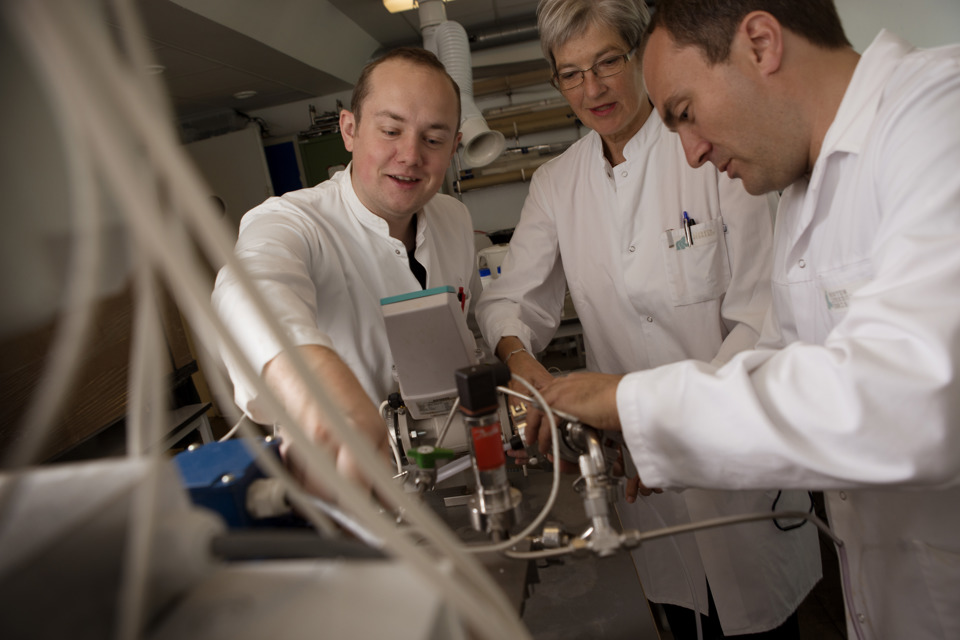Safer drinking water
This type of membrane has a large potential in surface water purification and waste water purification, and the project opens up for the use of an entirely new kind of membrane in these processes. Morten Lykkegaard Christensen explains:
- “In this project, we have shown that this kind of silicon-carbide-coated ceramic membrane is applicable in processes where medicine residue, oestrogen and the like need to be removed from drinking water. There is increasing worry that medicine and hormones in our drinking water will cause damage to both us and the environment in the long run, which means that there is an increased need for methods for purifying waste water from hospitals.”
The new type of coated membrane removes these substances and molecules through creating a surface charge that allows water to pass through the membrane – but not the unwanted substances.
- “One of the microbiologists from the department have helped us test that the membrane works in the intended way; it is now up to the company to produce and test the new membrane on a larger scale, for instance with regards to the strength of flow over time that the membrane can endure. This is an example of an ideal project for our department, where researchers from different sections – in this case inorganic chemistry, separation chemistry and microbiology – collaborate to develop the optimal solution for a project” Morten Lykkegaard Christensen finishes.
In addition to purification of waste water, the new type of membrane also has the potential to solve one of the major problems of the third world: limited access to pure drinking water. With this type of membrane, combined with polymeric membranes, purification of sea water into pure drinking water and salt can be performed in a much more energy-efficient – and therefore much cheaper – way, making it more accessible to third-world countries and improving the quality of life for millions of people.
Cases in short: Membrane research in Esbjerg and Copenhagen
Membranes can be used for many different separation purposes due to their high selectivity and low energy demands. The research on membranes takes place in Aalborg, Esbjerg and Copenhagen, and several different types of membranes are tested in various contexts. On the following page, we present two such projects that were finished in 2014 with very promising results.
New discovery may prevent pesticides in drinking water at AAU
Esbjerg, post.doc. Henrik Tækker Madsen conducts research in how to prevent pesticides in our drinking water. Traditionally, sand filtration systems are used for purifying ground water, which removes some of the leftover pesticides.
In 2014, Henrik Tækker Madsen completed a comprehensive project testing and modelling the use of already-existing nano-coated polymer membranes for removing pesticide residue. This has been the first time, the overall potential of using these kinds of membranes has been modelled, and the project ended with a remarkable result: it proved that if nano filtering is used, 96% of the pesticide residue can be removed.
Membranes improve the production of butyric acid
At AAU Copenhagen, associate professor Ioannis Skiadas in 2014 completed a project focusing on the optimisation of the microbial production of butyric acid through the use of membranes. Butyric acid is an important chemical that can be used e.g. for production of specific types of plastic; a production which will become increasingly important as the use of fossil fuels is phased out, and thus also the oil refineries where the butyric acid is traditionally produced.
One challenge of the microbial production compared to the production in oil refineries is that the microbial production does not have as large an output as desired. The butyric acid is a waste product of the process the microbes perform, and as such they will decrease their activity if there is a build-up of butyric acid in their environment. Ioannis Skiadas’ research project has tested the effect of inserting a membrane that continually removed the butyric acid, resulting in a proven increased production by the microbes.
